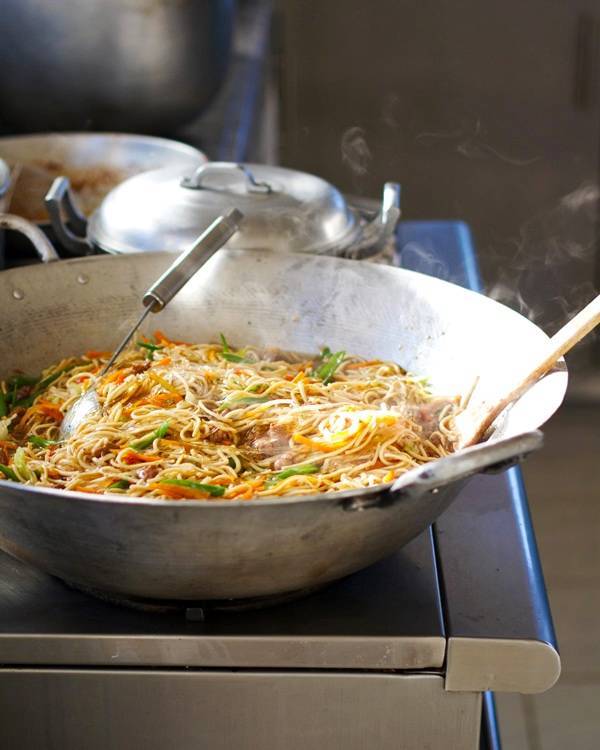Master the Art of Traditional Filipino Food Recipes.
Appreciate Conventional Filipino Flavors With Easy-To-Follow Recipes
Exploring conventional Filipino food supplies a distinct possibility to engage with a rich tapestry of tastes and cultural stories. As we explore these cooking practices, one might ask yourself exactly how to ideal bring the warmth of Filipino hospitality to their own eating table.

Introduction of Filipino Food
Exploring the lively tapestry of Filipino food discloses a rich cultural heritage affected by different historic and geographical aspects. As a result, Filipino cuisine is an unique blend of Malay, Spanish, Chinese, and American aspects.
Rice acts as the keystone of Filipino dishes, typically come with by an array of vegetables, meats, and seafood. Making use of vibrant flavors is a hallmark of the food, with components such as garlic, onions, ginger, and soy sauce playing essential functions. Furthermore, the emphasis on common dining mirrors the Filipino society of friendliness and family members ties.
Road food additionally plays a substantial role in the cooking scene, showcasing neighborhood components and creative food preparation approaches. As the Philippines remains to accept globalization, the combination of standard and contemporary impacts can be seen in modern Filipino recipes, additionally enhancing its cooking identification. Filipino food recipes. On the whole, Filipino cuisine is a testament to the nation's background, culture, and vibrant spirit
Must-Try Traditional Meals
Filipino food is ideal experienced through its standard recipes, each providing a special understanding right into the country's varied cooking heritage. Among the must-try dishes is Adobo, a savory stew commonly made with chicken or pork, seasoned in vinegar, soy sauce, and garlic before being slow-cooked to perfection. Its rich and appetizing flavor account represents the heart of Filipino comfort food.
Another legendary dish is Sinigang, a sour soup frequently prepared with tamarind, tomatoes, and numerous veggies. This dish can include pork, shrimp, or fish, and is cherished for its rejuvenating taste and warming up top qualities.
Lechon, an entire roasted pig, is a centerpiece at Filipino events, understood for its crunchy skin and tender meat. It personifies the festive spirit of Filipino events.
For those desire something sweet, Halo-Halo is a wonderful dessert incorporating crushed ice, sweetened fruits, jellies, and topped with leche flan and purple yam.
Each of these traditional recipes envelops the significance of Filipino culture, welcoming any person to savor the dynamic flavors and rich history that define the island chain's cooking hop over to these guys landscape.
Step-by-Step Recipes
Cooking genuine Filipino recipes in the house can be an enriching experience that brings the lively tastes of the Philippines into your cooking area. With a huge selection of standard dishes to select from, using step-by-step recipes permits both novice and knowledgeable chefs to master the techniques and tastes integral to Filipino cuisine.
Begin by selecting a meal that intrigues you, such as adobo, sinigang, or lumpia. Each dish commonly consists of a comprehensive ingredient listing adhered to by clear directions, guiding you with the cooking process. Begin with preparation, which might entail marinating healthy proteins, cutting veggies, or gauging spices. This foundational action guarantees a smooth cooking experience.
As you proceed, pay attention to cooking methods distinct to Filipino cuisine, such as sautéing (ginisa) or stewing (nilaga) These techniques can significantly improve the depth of taste in your dishes. Timing is vital; comply with the suggested food preparation times to achieve the perfect texture and preference.
Necessary Active Ingredients and Tips
Often, the trick to understanding Filipino food exists in understanding and utilizing vital active ingredients that define its distinct tastes. Central to numerous dishes are staples like soy sauce, vinegar, garlic, and ginger, which add to the distinct equilibrium of mouthwatering, sour, and wonderful notes. Soy sauce functions as a check out this site base for marinates and sauces, while vinegar, especially walking cane vinegar or coconut vinegar, imparts a zesty illumination that is important in recipes like adobo.
Rice is a vital element of Filipino meals, commonly served together with main training courses to take in delicious sauces. For a touch of credibility, go with jasmine or long-grain rice. In addition, making use of fresh fruit and vegetables such as tomatoes, environment-friendly beans, and eggplants enhances the dish's vibrancy and nutritional worth.
Do not forget the visit homepage significance of herbs and spices, such as bay leaves, lemongrass, and chili peppers, which boost the flavor profile. When food preparation, remember that patience is crucial-- allowing components to combine with each other causes richer tastes. Finally, accept the method of sampling as you go; this will certainly allow you to change spices and attain the perfect balance that characterizes Filipino cuisine.
Serving and Taking Pleasure In Filipino Meals
Comprehending the subtleties of Filipino food expands past prep work and components; it includes the means dishes are served and delighted in. The Filipino eating experience is defined by communal sharing, promoting a feeling of togetherness and party. Usually, dishes are presented in big servings, allowing restaurants to partake in a variety of flavors.
Rice, a staple in Filipino dishes, is often acted as the structure whereupon the other meals remainder. Going along with viands, such as adobo, sinigang, or lechon, are placed in the facility of the table, welcoming visitors to serve themselves. Filipino food recipes. This technique not just fosters a loosened up atmosphere but additionally motivates discussions and links among restaurants

Final Thought
In verdict, standard Filipino cuisine uses a rich tapestry of tastes and social relevance, welcoming expedition via its varied meals. Engaging with this vibrant food not only improves the dining experience however additionally maintains and commemorates the heritage of the Filipino people.